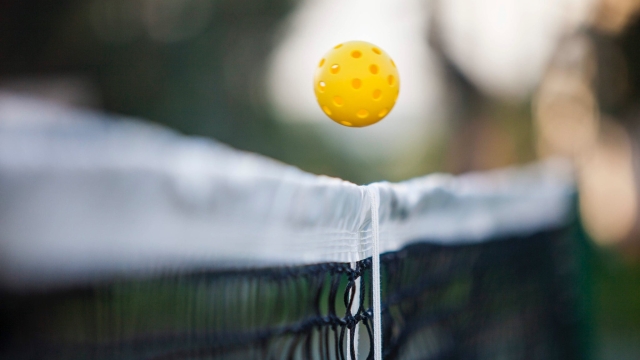In recent years, a sport that combines elements of tennis, badminton, and ping pong has taken the recreational world by storm. That sport is pickleball, and it is more than just a game; it has evolved into a vibrant culture enjoyed by people of all ages. From the sun-kissed courts of suburban neighborhoods to the bustling indoor facilities of urban centers, pickleball has captured the hearts of many, fostering community and competition.
What makes pickleball so appealing? Its accessible nature allows players of all skill levels to participate, bridging the gap between beginners and seasoned athletes. The smaller court size and slower-paced gameplay make it easy to learn, yet the strategic depth provides plenty of opportunities for players to hone their skills. This rise in popularity has not only transformed the way people engage in physical activity but has also created a unique social scene, complete with tournaments, leagues, and friendly gatherings, all centered around the love of the game.
The Origins of Pickleball
Pickleball was created in 1965 on Bainbridge Island, Washington, by three dads – Joel Pritchard, Bill Bell, and Barney McCallum. They were looking for a way to entertain their children during the summer. The game began as a combination of tennis, badminton, and table tennis, using ping pong paddles and a perforated plastic ball. It was initially played on a badminton court, which they quickly adapted with their own set of rules.
As the game gained popularity among their families and friends, the trio formalized the rules and constructed a permanent court. The unique name "pickleball" has various origin stories, but one popular theory is that it was named after Pritchard’s dog, Pickles, who would chase after the ball during games. Regardless of its name, the sport began to spread beyond the island, capturing the interest of local communities and eventually the nation.
By the 1970s, pickleball had established its presence in recreational facilities and community centers across the United States. The first official tournament was held in 1976, which further ignited interest in the sport. Its inclusive nature, suitable for players of all ages and skill levels, contributed to its growing popularity, creating a foundation for the vibrant pickleball culture we see today.
The Growing Popularity
Pickleball has exploded in popularity across the United States and beyond, attracting players of all ages and skill levels. This growth can be attributed to its accessibility, as the sport combines elements of tennis, badminton, and table tennis, making it easy for newcomers to grasp. Communities are increasingly dedicating space for courts, and recreational centers are offering lessons to cater to the surging interest. Its simple rules and social nature also contribute to its appeal, allowing friends and families to join in on the fun.
The demographic of pickleball players is as diverse as the sport itself. From young children to retirees, everyone seems to be picking up a paddle. This inclusivity fosters a welcoming environment where players can engage with others, regardless of their athletic background. Local leagues and tournaments are popping up, further fueling the competitive spirit that adds excitement to the game. As more individuals discover the joys of pickleball, its community continues to expand, creating strong bonds among participants.
Moreover, the rise of social media has played a significant role in promoting pickleball culture. Players share their experiences, tips, and highlights from matches, which inspires others to take part. With dedicated online communities and influencers showcasing the sport, the visibility of pickleball has reached unprecedented levels. This increase in awareness not only generates interest but also encourages clubs and organizations to invest in teaching and supporting new players. As the sport continues to grow, it is clear that pickleball is more than just a pastime; it is becoming a vibrant cultural phenomenon.
Pickleball Communities
Pickleball has given rise to a vibrant culture that fosters community engagement and connection. Local clubs and recreational centers have become gathering spots for enthusiasts of all ages. Players come together not just to enjoy the game, but also to socialize and build friendships. These community spaces are often designed to be inclusive, welcoming beginners and seasoned players alike, creating an environment where everyone can thrive and enjoy the sport.
https://playatpac.com/
As pickleball’s popularity continues to grow, many communities are forming leagues and organizing tournaments to encourage participation. These events not only provide a platform for friendly competition but also serve as a means of bonding among players. Many participants express that these leagues transform their social lives, often leading to deeper relationships that extend beyond the court. Through organized play, the sense of camaraderie within these pickleball communities is palpable, further enhancing the enjoyment of the game.
In addition to traditional play, many pickleball communities engage in social events, workshops, and charity tournaments. This diversity of activities strengthens community ties and promotes the sport to a wider audience. By hosting family-friendly events and introducing programs for children, these communities are ensuring the future of pickleball. The collective enthusiasm for the game is palpable, and it continues to inspire new players to pick up a paddle and join in the fun.
Impact on Health and Wellness
Engaging in pickleball has shown significant benefits for both physical and mental health. The sport combines elements of tennis, badminton, and table tennis, providing a low-impact cardiovascular workout that improves agility, balance, and coordination. Players constantly move, sprint, and change directions, which promotes cardiovascular health and aids in maintaining a healthy weight. The ease of learning the game means that people of all ages can participate, making it an accessible option for those looking to improve their fitness levels.
Beyond the physical advantages, pickleball also fosters mental well-being. The social aspect of the game, often played in doubles, encourages camaraderie and teamwork, helping to build friendships and a sense of community. This social interaction can reduce feelings of loneliness and depression, contributing to better overall mental health. Participants often report improved mood and reduced stress levels after playing, making it a great outlet for those experiencing the pressures of daily life.
Finally, the rise of pickleball culture promotes a healthier lifestyle beyond the court. The increased popularity of the sport has led to more people prioritizing physical activity and community engagement. Local clubs and recreational centers are increasingly offering pickleball programs that create a supportive environment for new and seasoned players alike. This shift towards community-oriented exercise encourages a more active lifestyle, which is essential for maintaining long-term health and wellness.

















